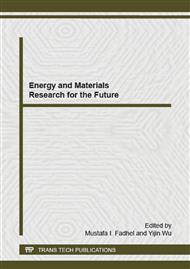p.178
p.183
p.188
p.193
p.199
p.205
p.211
p.217
p.222
Waterborne Polyurethane Used as Binders for Lithium-Ion Battery with Improved Electrochemical Properties
Abstract:
LiFePO4 based Lithium-ion batteries are prepared by nonionic waterborne polyurethane with different soft segments which act as binder. FTIR is used to characterize the structure of waterborne polyurethanes .The emulsion viscosity, mechanical properties of films are measured. The result shows that, the emulsion viscosity and tensile strength of polyurethane based polyether glycol are smaller than polyurethane based polyester. Charge-discharge, cycle performance and AC impedance spectroscopy measurement indicat that the first charge-discharge efficiency is 92%, the biggest discharge capacity is 115 mAh/g for lithium-ion batteries based on waterborne polyurethane as adhesive which equaled to PVDF, the batteries have a good cycle performance and high cycle efficiency and the impedance of batteries are small than PVDF.
Info:
Periodical:
Pages:
199-204
Citation:
Online since:
February 2015
Authors:
Keywords:
Price:
Сopyright:
© 2015 Trans Tech Publications Ltd. All Rights Reserved
Share:
Citation:


